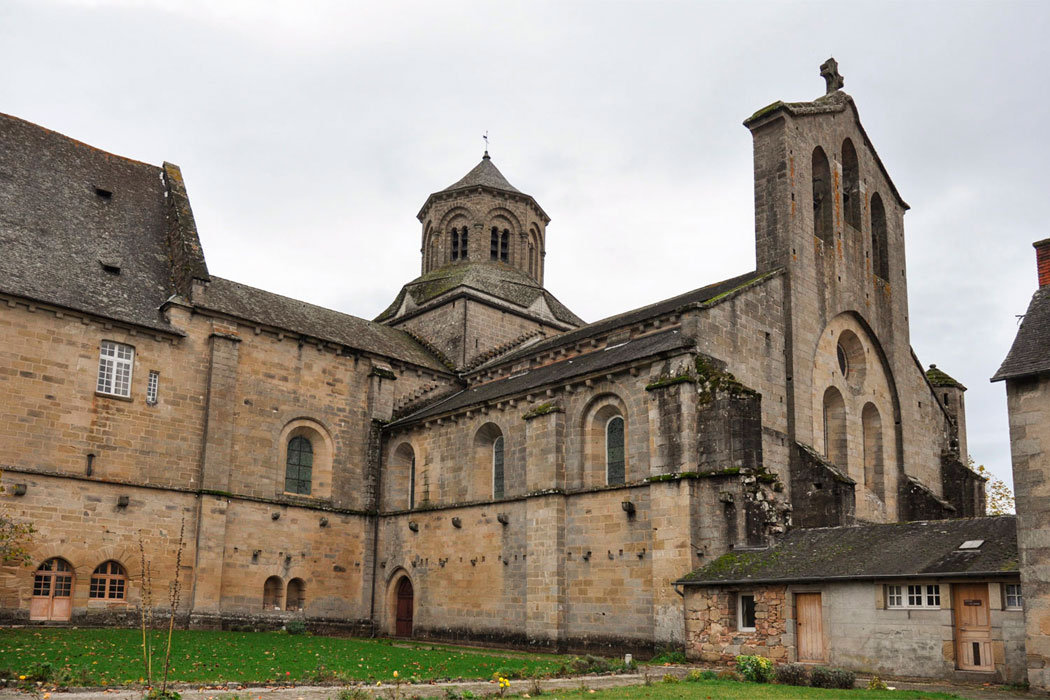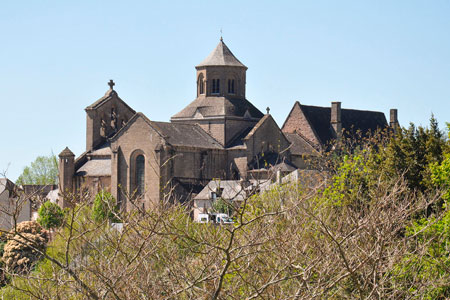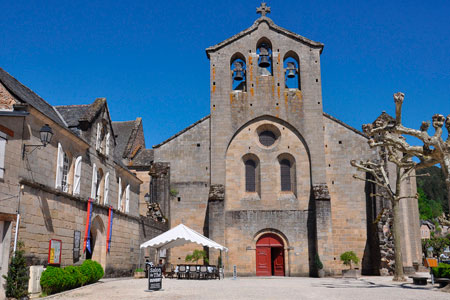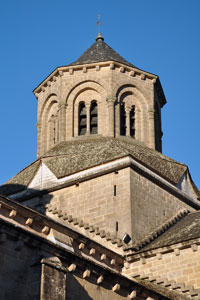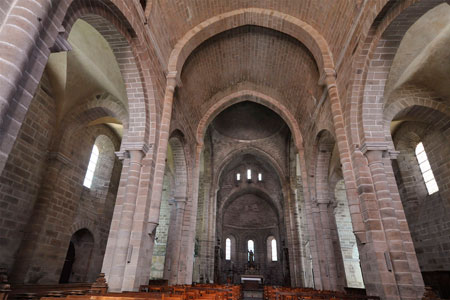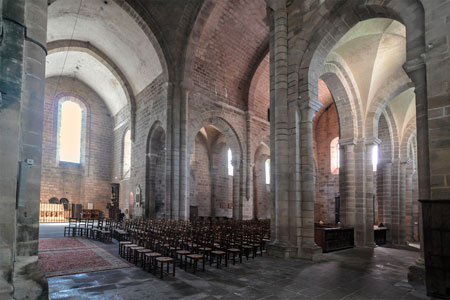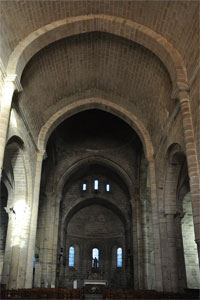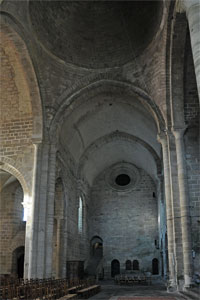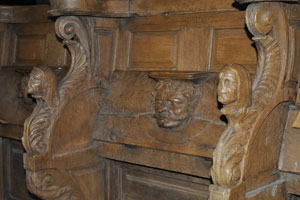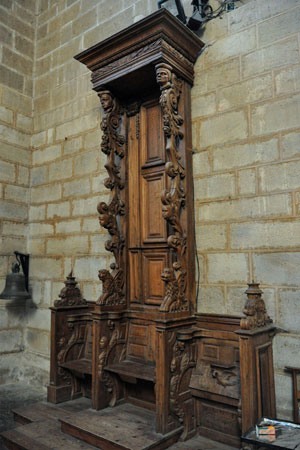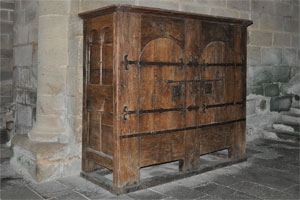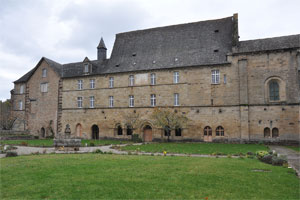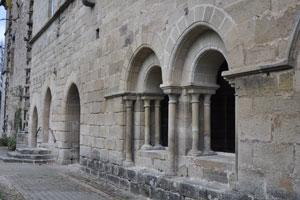The origins of the Abbey of Obazine lie in a hermitage established very close to this site by Stephen of Vielzot (also known as Stephen of Obazine, † 1159) and his companion Peter. Soon, some followers gathered around them, leading them to formalize the establishment by obtaining episcopal approval. It is believed that the hermitage was founded, that is, authorized, around 1127.
Despite the initial intention of its founders to lead an eremitic life, the site gradually became a cenobium where community life was practiced, albeit under very strict rules of isolation and silence. Between 1130 and 1134, a more suitable location was sought for the construction of a monastery capable of accommodating the growing community. In 1135, despite his reluctance due to his inclination toward eremitic life, Stephen took charge of the new house. At that foundational stage, the monastery did not follow any known rule but was governed by its own very strict regulations, which also included manual labor.
That same year, Stephen visited the Grande Chartreuse, attracted by the Carthusian way of life, which was taking shape at the time. Despite his willingness to reach an agreement with the Carthusians, this did not materialize, likely due to the large number of monks at Obazine, which the Carthusians preferred to keep smaller, and the considerable distance between the two monasteries, which discouraged affiliation. Upon returning to Obazine, he decided to consolidate the establishment as a fully cenobitic monastery and continue its construction, debating whether to become a regular canonry or adopt a monastic rule.
At the same time, the female community that had formed in the same location was regularized. In 1140, construction began on the monastery of Coyroux, intended for the nuns. Obazine came into contact with the Abbey of Dalon (Dordogne), which had adopted Cistercian customs, and monks from Dalon instructed the new house in cenobitic life. In 1142, the Bishop of Limoges consecrated the churches of both Obazine and Coyroux, the latter located near the first.
Thanks to its solidity and reputation, Obazine soon founded new houses, such as Bonaigue (Corrèze, 1140), La Valette (Cantal, 1143), which was later relocated, and the cell of La Frenade (Charente, c. 1140), among others. However, the monastery did not officially adopt the Cistercian rule until 1147. Over the following years, efforts were made to fully adapt to the new customs. In 1156, the construction of a new church began while the founder was still alive. The Cistercian monastery experienced a long period of prosperity and maintained a very large community.
Thanks to the generosity of the nobility, including the viscounties of Comborn and Touraine, the monastery accumulated extensive possessions that spread across various regions. In 1279, the remains of the saintly founder were transferred from the chapter house to the church and placed in a tomb decorated with sculptures, which is still preserved. The Hundred Years’ War affected the monastery and its possessions, and over time, a village developed around it. Later, it also suffered the effects of the Wars of Religion. By the 18th century, the community was in decline, and the buildings were in danger of ruin. In 1757, the church was shortened, losing six of its original nine bays and drastically reducing its dimensions. Monastic life came to an end in 1789 with the Revolution.
Of the monastic complex, the church is the most well-preserved structure. After its partial demolition, it now consists of three naves with three bays, a transept, and a polygonal apse. The transept arms feature six rectangular chapels. The building, originally from the 12th century, houses the tomb of Saint Stephen of Obazine, a remarkable 13th-century work. Among other notable elements, it also preserves a liturgical wooden armoire (12th century) and remains of the 17th-century choir stalls. Regarding the monastic dependencies, the chapter house remains, while other structures, such as the cloister and refectory, have been lost.
Affiliation of Obazine
According to Originum Cisterciensium (L. Janauschek, 1877)- AUBERT, R. (1963). Dictionnaire d'histoire et de géographie ecclésiastiques. Vol. 15. París: Letouzey et Ané
- BANCHEREAU, M. (1923). Obasine. Congrès archéologique de France. LXXXIV session tenue a Limoges. París: Picard
- BARRIÈRE, Bernadette (1977). L’abbaye cistercienne d’Obazine en Bas-Limousin. Les origine. Le patrimoine. Tulle: Conseil G. De la Corrèze
- BEAUNIER, Dom (1912). Abbayes et prieurés de l'ancienne France. Vol. 5. Bourges. Abbaye de Ligugé
- CANTIÉ Geneviève; i altres (2007). Obazine, abbaye. Congrès archéologique de France, 163e session, 2005, Corrèze. Société française d’archéologie
- COTTINEAU, Laurent-Henri (1936). Répertoire topo-bibliographique des abbayes et prieurés. Vol. 1. Mâcon: Protat
- DULAURENS, Jean (1887). Saint-Etienne d'Obazine : sa vie, ses reliques, son culte. Restauration de sa chapelle et de son tombeau. Tulle: Mazeyrie
- GUÉRIN, Paul (1888). Les Petits Bollandistes. Vies des saints. Vol. 3. París: Bloud et Barral
- JANAUSCHEK, Leopoldus (1877). Originum Cisterciensium. Vol. 1. Viena
- MAURY, Jean (1960). Limousin roman. La Nuit des temps, 11. Zodiaque
- ROY DE PIERREFITTE, J.-B. L. (1857-63). Études historiques sur les monastères du Limousin & de la Marche, vol. 1. Guêret: Betoulle
- SAINT-MAUR, Congregació de (1720). Gallia Christiana in provincias ecclesiasticas distributa. Vol. 2. París: Typographia Regia
